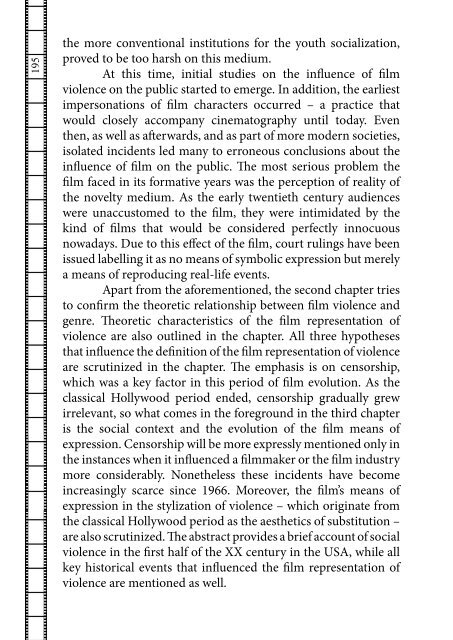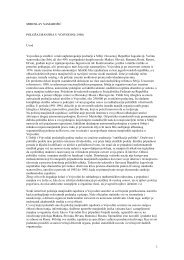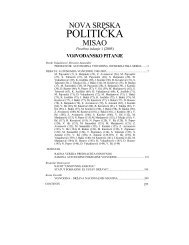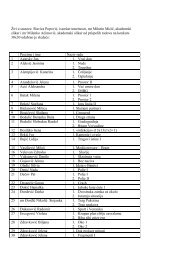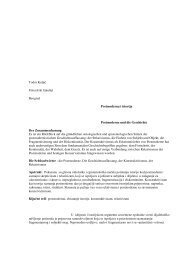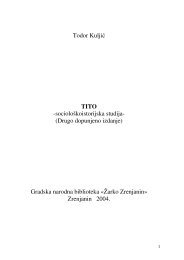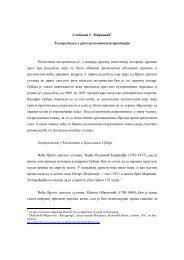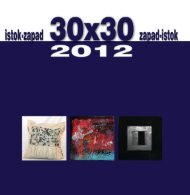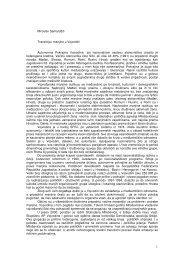Create successful ePaper yourself
Turn your PDF publications into a flip-book with our unique Google optimized e-Paper software.
195<br />
the more conventional institutions for the youth socialization,<br />
proved to be too harsh on this medium.<br />
At this time, initial studies on the influence of film<br />
violence on the public started to emerge. In addition, the earliest<br />
impersonations of film characters occurred – a practice that<br />
would closely accompany cinematography until today. Even<br />
then, as well as afterwards, and as part of more modern societies,<br />
isolated incidents led many to erroneous conclusions about the<br />
influence of film on the public. The most serious problem the<br />
film faced in its formative years was the perception of reality of<br />
the novelty medium. As the early twentieth century audiences<br />
were unaccustomed to the film, they were intimidated by the<br />
kind of films that would be considered perfectly innocuous<br />
nowadays. Due to this effect of the film, court rulings have been<br />
issued labelling it as no means of symbolic expression but merely<br />
a means of reproducing real-life events.<br />
Apart from the aforementioned, the second chapter tries<br />
to confirm the theoretic relationship between film violence and<br />
genre. Theoretic characteristics of the film representation of<br />
violence are also outlined in the chapter. All three hypotheses<br />
that influence the definition of the film representation of violence<br />
are scrutinized in the chapter. The emphasis is on censorship,<br />
which was a key factor in this period of film evolution. As the<br />
classical Hollywood period ended, censorship gradually grew<br />
irrelevant, so what comes in the foreground in the third chapter<br />
is the social context and the evolution of the film means of<br />
expression. Censorship will be more expressly mentioned only in<br />
the instances when it influenced a filmmaker or the film industry<br />
more considerably. Nonetheless these incidents have become<br />
increasingly scarce since 1966. Moreover, the film’s means of<br />
expression in the stylization of violence – which originate from<br />
the classical Hollywood period as the aesthetics of substitution –<br />
are also scrutinized. The abstract provides a brief account of social<br />
violence in the first half of the XX century in the USA, while all<br />
key historical events that influenced the film representation of<br />
violence are mentioned as well.


